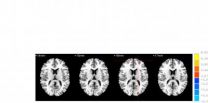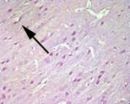(Press-News.org) The internal surface area of the gastro-intestinal tract has long been considered to be between 180 and 300 square meters. Scientists at the Sahlgrenska Academy have used refined microscopic techniques that indicate a much smaller area.
"Actually, the inner surface of the gastro-intestinal tract is only as large as a normal studio apartment," says scientist Lars Fändriks.
The digestive tract, which passes from the mouth through the esophagus and onwards through the intestines, has a length of about 5 meters in a normal adult, and is built up with many folds and protrusions.
Previous calculations, which are reproduced in reference works and textbooks, state that the area of the inner surface of the digestive tract is between 180 and 300 square meters – as large as, or even larger than, a tennis court.
Wrong figures
A new study from the Sahlgrenska Academy, published in the Scandinavian Journal of Gastroentorology, shows that these figures are wrong.
Scientists Lars Fändriks and Herbert Helander have used quantitative microscopic techniques to determine that the surface area of the gastro-intestinal tract in healthy adults is "only" between 30 and 40 square meters.
By far the greatest part of this is the small intestine. The area of the large intestine is approximately 2 square meters, while the mouth, esophagus and stomach amount to less than 1 square meter.
Half of a badminton court
Lars Fändriks finds it surprising that the area of the gastro-intestinal tract is not that of a tennis court, rather half of a badminton court.
"It may appear to be simply a curious fact, but the dimensions of the inner surface of the gastro-intestinal tract are important for the uptake of nutrients and drugs, and the new information will help us understand how the mucous membrane protects the body from harmful factors in the intestinal contents," he says.
Misleading measurements
The Gothenburg scientists explain how the previously erroneous results were arrived at:
"The gastro-intestinal tract is a dynamic system that is difficult to access in the abdominal cavity, and this makes it difficult to measure. Since the past measurements were carried out either during post mortems or during abdominal surgery, when the tissue is relaxed, it is easy to obtain misleading measurements," says Herbert Helander.
Radiological investigations
The two scientists from Gothenburg have used data from radiological investigations, supplemented with studies of the microscopical structure of the gastro-intestinal tract, where they have used endoscopes to obtain samples of the mucous membrane of the intestines.
The scientists emphasize that the new dimensions are valid for a healthy "average" adult: the length and surface area of the digestive tract differs from person to person. In addition, the measurement for an individual is probably affected by diet and lifestyle.
"From an anatomical point of view, 30-40 square meters is more than enough for the uptake of nutrients. Furthermore, the smaller area is actually quite logical, since it means that the risk of effects from the intestinal contents is lower," says Herbert Helander.
INFORMATION:
The article Surface area of the digestive tract – revisited was published in the Scandinavian Journal of Gastroenterology on 2 April.
Link to the article: http://informahealthcare.com/doi/abs/10.3109/00365521.2014.898326
FACTS ABOUT THE DIGESTIVE TRACT
The principle function of the digestive tract is the digestion of food and the absorption of nutrients. The tract is also an important "detection point" for the body's immune system. Both of these functions require a large surface area. On the other hand, the intestinal contents contain toxins that have accompanied the food, as well as bacteria, which may cause disease. The mucous membrane of the intestines then functions as a barrier to these harmful factors – and in this case it is an advantage to have a small surface area.
Contact:
Herbert Helander, Professor emeritus at the Sahlgrenska Academy, University of Gothenburg
Tel.: +46 300 74421
Mobile: +46 705 505139
herberthelander@hotmail.com
Lars Fändriks, Professor at the Sahlgrenska Academy, University of Gothenburg
Tel.: +46 31 342 4123
Mobile: +46 70 592 2603
lars.fandriks@gastro.gu.se
The surface area of the digestive tract 'only' as large as a studio apartment
2014-04-23
ELSE PRESS RELEASES FROM THIS DATE:
Change 'authoritarian' football culture to produce future stars, says research
2014-04-23
Premier League soccer stars are subjecting their club's junior players to regular insults and practical jokes in a humiliating rite of passage, the British Sociological Association's annual conference in Leeds heard today. [Wednesday 23 April 2014]
This was part of an "authoritarian" treatment of youth team players which undermined attempts to change the culture of clubs and produce better footballers, Dr Chris Platts, of Sheffield Hallam University's Academy of Sport and Physical Activity, said.
Dr Platts interviewed 303 junior players aged 16 to 18 and 13 coaches ...
Screening instrument to identify testosterone deficiency
2014-04-23
New Rochelle, NY, April 23, 2014—Men whose testosterone falls below normal levels are more likely to have erectile dysfunction and to be overweight and have heart disease and type 2 diabetes. A new simple screening questionnaire designed to identify testosterone-deficient men for further testing and possible treatment is described in an article in Journal of Men's Health, a peer-reviewed publication from Mary Ann Liebert, Inc., publishers. The article is available free on the Journal of Men's Health website at http://www.liebertpub.com/jmh.
The article "Male Androgen ...
Following a protein's travel inside cells is key to improving patient monitoring, drug development
2014-04-23
In science, "simple and accessible detection methods that can rapidly screen a large cell population with the resolution of a single cell inside that population has been seriously lacking," said Virginia Tech chemical engineer Chang Lu.
In the Royal Society of Chemistry journal Chemical Science, Lu has announced that he and his coworkers have developed a novel technique that detects the subcellular location of a protein (Chem. Sci., 2014, DOI: 10.1039/C4SC00578C, http://pubs.rsc.org/en/content/articlelanding/2014/sc/c4sc00578c#!divAbstract). The significance of this method ...
Airport security-style technology could help doctors decide on stroke treatment
2014-04-23
A new computer program could help doctors predict which patients might suffer potentially fatal side-effects from a key stroke treatment.
The program, which assesses brain scans using pattern recognition software similar to that used in airport security and passport control, has been developed by researchers at Imperial College London. Results of a pilot study funded by the Wellcome Trust, which used the software are published in the journal Neuroimage Clinical.
Stroke affects over 15 million people each year worldwide. Ischemic strokes are the most common and these ...
Gym culture likened to McDonald's
2014-04-23
Visit a typical gym and you will encounter a highly standardised notion of what the human body should look like and how much it should weigh. This strictly controlled body ideal is spread across the world by large actors in the fitness industry.
A new study explores how the fitness industry in many ways resembles that of fast food. One of the authors is from the University of Gothenburg.
McDonaldisation of the gym culture is the theme of an article published in Sports, Education and Society, where Thomas Johansson, professor at the University of Gothenburg, together ...
Acupuncture at Waiguan improves activation of functional brain areas of stroke patients
2014-04-23
Both acupuncture at Waiguan (SJ5) and sham acupuncture can activate/deactivate several brain regions in patients with ischemic stroke, but there are some difference in Brodmann areas 4, 6, 8, Brodmann areas 7, 39, 40, Brodmann areas 18, 19, 22 and Brodmann areas 13, 24, 32, 28. Most studies addressing the specificity of meridians and acupuncture points have focused mainly on the different neural effects of acupuncture at different points in healthy individuals. Dr. Ji Qi and co-workers from School of Traditional Chinese Medicine, Southern Medical University in China examined ...
Physicist demonstrates dictionary definition was dodgy
2014-04-23
It is the defining moment that demonstrates a QUT physicist was correct in pointing out a 99-year-old mistake to one of the world's most authoritative dictionaries.
QUT Senior Lecturer in Physics, Dr Stephen Hughes, sparked controversy over how a humble siphon worked when he noticed an incorrect definition in the prestigious Oxford English Dictionary.
In 2010, eagle-eyed Dr Hughes spotted the mistake, which went unnoticed for 99 years, which incorrectly described atmospheric pressure, rather than gravity, as the operating force in a siphon.
Dr Hughes demonstrated ...
Atorvastatin protects against cerebral ischemia/reperfusion injury
2014-04-23
In addition to its lipid-lowering effect, statins exert anti-inflammatory and antioxidant effects as well. Statins also provide protection against renal, pulmonary and myocardial ischemia/reperfusion injury. However, little evidence is available on similar changes in cerebral ischemia/reperfusion injury. Therefore, Dr. Qiuyun Tu and colleagues from Third Xiangya Hospital of Central South University in China verified that atorvastatin, a commonly used lipid-lowering drug, protects against cerebral ischemia/reperfusion injury through anti-infammatory and antioxidant effects. ...
Is nuclear power the only way to avoid geoengineering?
2014-04-23
Los Angeles, London (April 23, 2014). "I think one can argue that if we were to follow a strong nuclear energy pathway—as well as doing everything else that we can—then we can solve the climate problem without doing geoengineering." So says Tom Wigley, one of the world's foremost climate researchers, in the current issue of Bulletin of the Atomic Scientists, published by SAGE. Refusing to take significant action on climate change now makes it more likely that geoengineering will eventually be needed to address the problem, Wigley explains in an exclusive Bulletin interview. ...
Midlife occupational and leisure-time physical activity limits mobility in old age
2014-04-23
Inverse Effects of Midlife Occupational and Leisure Time Physical Activity on Mobility Limitation in Old Age
Strenuous occupational physical activity in midlife increases the risk of mobility limitation in old age, whereas leisure-time physical activity decreases the risk. This is found in a study which followed up 5,200 public sector employees for 28 years. The study was conducted at the Gerontology Research Center in Finland and the Finnish Institute of Occupational Health.
Heavy physical labor is often repetitive, wears the body and lasts for several hours a day. ...






